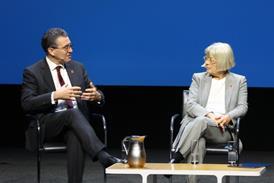Reviewed by: David McIntosh
Publisher: Sweet & Maxwell
ISBN: 9780414047570
Price: £508.10
It was more than 40 years ago when I saw, for the first time, The White Book as more than a two-volume tome. That was when I witnessed a part of it being thrown at Lord Denning from the front row of the Court of Appeal by a serial litigator. It narrowly missed and hit the wall behind him. Having pointed out it was open to him to hold her in contempt of court, Lord Denning instead stated he preferred to assume she was merely adding force to a legal point in her favour.
This, of course, has been a function of The White Book since it was first published. As someone with a civil litigation background, which began shortly before that incident, it is a pleasure to review the 2011 edition of what has been a bible to me over many years.
In addition to its main source of legislative material, the Civil Procedure Rules and other primary and secondary legislation, its 6,410 pages include practice directions, precedents and protocols covering every conceivable procedural need. These provide court users with a practical way forward when faced by the question ‘what do I do now?’.
It is not possible in the space allotted to me to attempt a comprehensive review of The White Book’s virtues and, instead, I focus on the aid it provides in encouraging alternative dispute resolution. There was no incentive to pursue ADR, except the proper application of common sense, when I first became involved in litigation. As a result, disputes were too often over-aggressive.
By its explanation of the overriding objectives of the CPR to enable the courts to deal with cases fairly and proportionately through case management with the parties required to ‘help the court’, The White Book sets the tone for cooperation and the early settlement of disputes. Where this is not possible, it sets out an efficient process for narrowing the issues for working and towards an early trial.
This emphasis heightens the importance of the guidance on the applicability of pre-action conduct and protocols (at Section C of Volume I), with the theme that litigation is viewed as the last resort. This provides the impetus for potential litigators, whether claimants or defendants, to do their best to settle disputes by negotiation, arbitration or mediation, before starting proceedings.
This, combined with the clarity of the guidance (at Section C-010, page 2,419 of Volume I) on the powers of the court to penalise the parties for non-compliance with the pre-action requirements, has undoubtedly contributed to the reduction in the number of cases that end up in court.
But for those who, nevertheless, find it necessary to commence or defend court proceedings, The White Book, in its entirety, covers just as impressively every potential procedural need - and its multiple editors are to be congratulated on its user-friendliness.
David McIntosh is a past president of The Law Society of England and Wales. He is now a consultant with Rodney Warren & Co

















![Emily-1[17]](https://d1d8vslyhr7rdg.cloudfront.net/Pictures/274x183/3/1/7/120317_emily117_695594_crop.jpg)










No comments yet